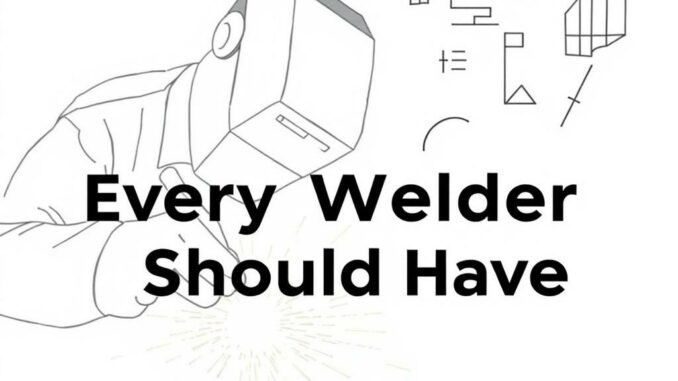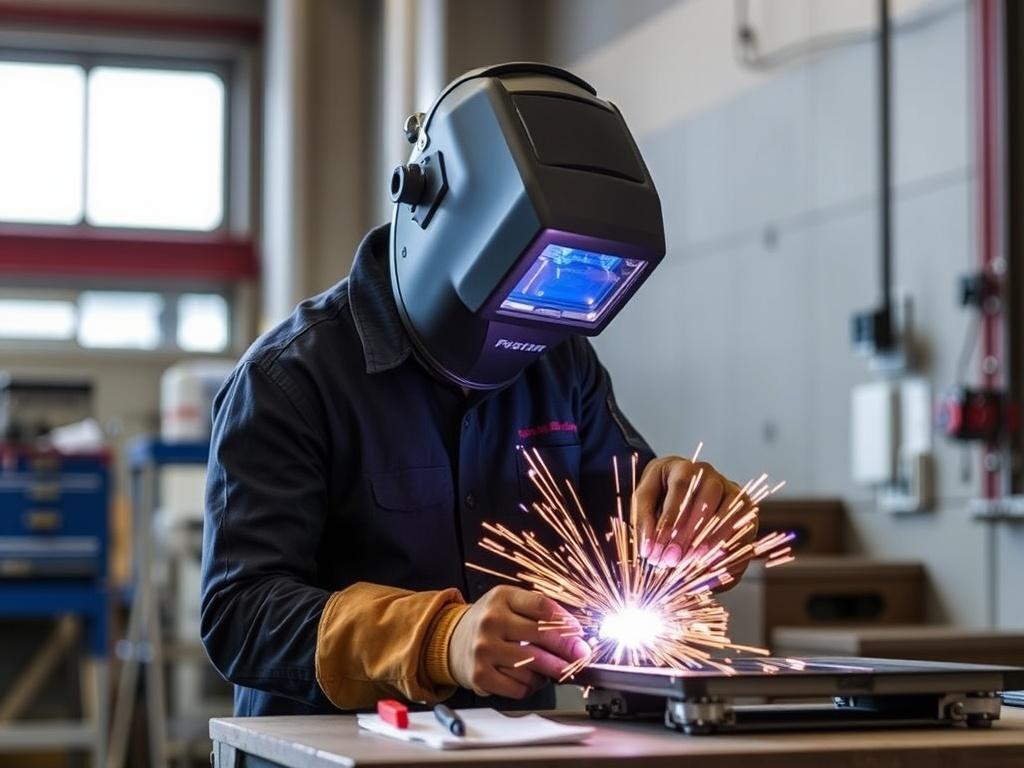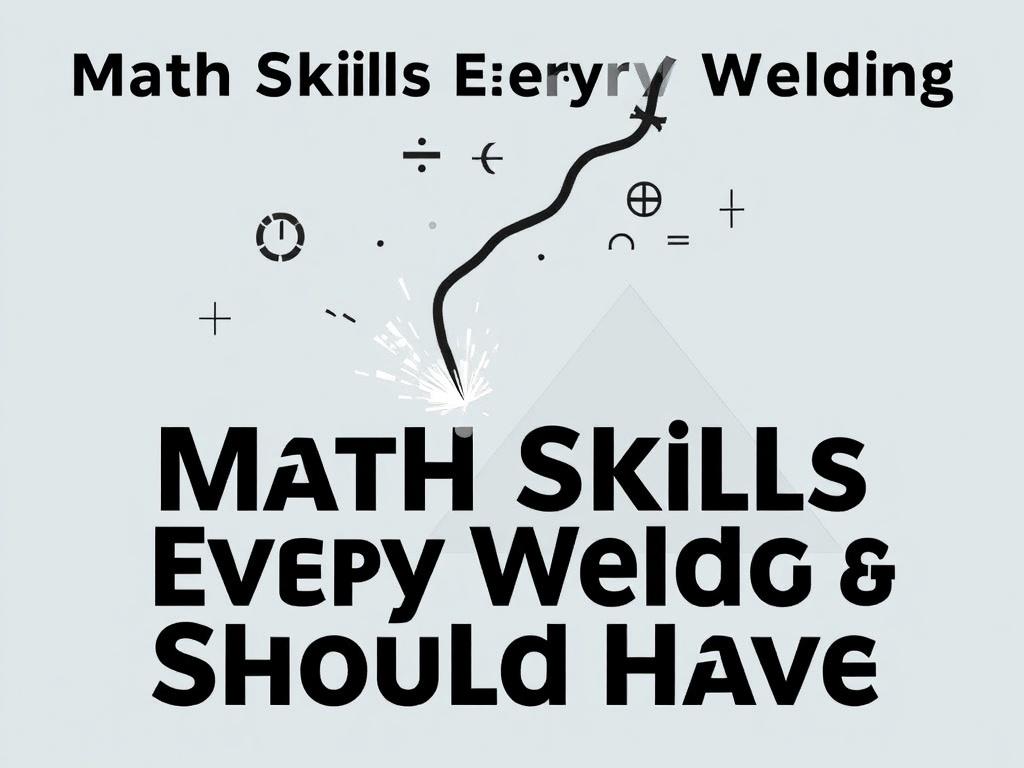
Welding is an art, a science, and a craft all rolled into one. It demands creativity, physical skill, and above all, a solid understanding of math. Whether you’re a beginner or a seasoned professional, strong math skills are essential in ensuring every weld is precise, strong, and meets the strictest standards. But what math skills exactly should every welder have? How do these skills translate into real-world welding scenarios, and why are they so critical? If you’re curious, you’re in the right place.
In this comprehensive guide, we will explore the wide range of math skills every welder should have. We’ll break down complicated concepts into easy-to-understand chunks and show you practical examples. By the end, you’ll realize that having good math skills will not only boost your welding craftsmanship, but also increase your value in the job market and enhance your safety on the job.
Why Are Math Skills Important for Welders?

When you think about welding, the first images that might pop into your mind are sparks, metal, and intense heat. What you probably don’t think about is math. Yet, welding is deeply intertwined with mathematical concepts. From measuring materials accurately to calculating the angles of cuts and ensuring the correct amounts of heat and filler material, math is fundamental.
Imagine having to weld two metal pieces at an exact 45-degree angle, or needing to figure out how much rod to use for a specific joint. Without math skills, these tasks could become frustrating or downright dangerous. Poor measurements can lead to weak joints, structural failures, or waste of time and materials.
Besides accuracy, math skills help welders read blueprints and technical drawings, understand the specifications, and communicate effectively with engineers and other tradespeople. In the modern welding environment, where precision counts more than ever, math is no longer optional—it’s a necessity.
Fundamental Math Skills Every Welder Should Master
Let’s start with the basics. There are some core math skills every welder should master to perform their job efficiently and safely:
- Measurement and Units Conversion: Being able to measure lengths accurately, and convert between units such as inches, centimeters, millimeters, and feet.
- Geometry: Understanding shapes, angles, and spatial relationships to ensure cuts and welds fit perfectly.
- Algebra: Basic algebra enables welders to solve for unknown variables, which is helpful in calculating material quantities or weld lengths.
- Trigonometry: Applying sine, cosine, and tangent functions to calculate angles and distances in three dimensions.
- Basic Arithmetic: Addition, subtraction, multiplication, and division are fundamental for quick, on-the-fly calculations.
Without these foundational math skills, even the most skilled hand could falter when facing the complex demands of welding projects.
Measurement and Unit Conversion in Welding

One of the most frequent tasks a welder performs involves precise measurement. Whether you’re cutting metal sheets, setting up fixtures, or calculating the amount of filler material, accuracy starts with correct measurements.
Measurements often come in various units, and welders need to convert between metric and imperial units seamlessly. For example, a blueprint may specify a length in millimeters, but your measuring tape is calibrated in inches. The ability to convert 25 millimeters to approximately 0.98 inches quickly ensures that you don’t waste materials or produce poorly fitting assemblies.
Here’s a simple conversion table every welder can keep handy:
| Unit | Equivalent in Inches | Equivalent in Millimeters |
|---|---|---|
| 1 inch | 1 inch | 25.4 mm |
| 1 foot | 12 inches | 304.8 mm |
| 1 millimeter | 0.03937 inches | 1 mm |
| 1 centimeter | 0.3937 inches | 10 mm |
It’s also essential to understand tolerances and how minor deviations can impact the final product. A few millimeters’ error could lead to a joint that doesn’t seal properly or a component that doesn’t align, potentially compromising safety and quality.
Geometry: Shaping the World of Welders
Geometry is the backbone of welding when it comes to creating the perfect fit between metal parts. Welders work with angles, circles, arcs, and polygons every day. Understanding shapes and the geometric properties of materials helps you plan your cuts, position your welding torch, and join components effectively.
Consider a common scenario where two metal plates need to be welded at a specific angle, say 45 degrees, to form a corner. Without knowledge of geometry, you might make incorrect cuts that waste material and weaken the structure. Geometry also plays a crucial role in understanding joint types like butt joints, lap joints, and tee joints—all of which have distinct shapes and require different approaches.
Let’s look at some basic geometric concepts welders deal with:
- Angles: Welders often work with angles ranging from 30 to 90 degrees. A good grasp of how to measure and calculate angles is vital.
- Shapes: Rectangles, squares, triangles, circles—these shapes form the components welders join daily.
- Area and Perimeter: Calculating the surface area for paint or insulation and perimeters for weld lines.
Here is an example formula: To calculate the length of the hypotenuse c in a right-angled triangle with legs a and b, welders can use the Pythagorean theorem:
c = √(a² + b²)
Understanding and using this formula allows welders to create precise cuts that fit perfectly together, eliminating gaps and enhancing weld strength.
Practical Application of Geometry in Welding
Imagine you’re fabricating a metal frame that requires angled cuts. You measure the sides but need to calculate the exact length of the cut edge that’s neither vertical nor horizontal. Using the Pythagorean theorem or trigonometric functions helps determine the correct lengths so the parts fit perfectly once welded.
Additionally, measuring angles with tools like protractors or digital angle finders requires familiarity with basic geometry principles. Knowing whether angles are acute, right, or obtuse helps welders judge their workspace and adjust as needed.
Algebra for Welders: Solving Unknowns
Algebra might seem like a distant classroom subject, but in the welding world, it is a powerful tool. Algebra helps welders solve problems involving unknown variables—something that comes up quite often in real life.
For example, determining how many linear feet of weld are necessary for a project can involve solving equations. Let’s say a weld joint requires a certain amount of filler material calculated by multiplying the weld length by the cross-sectional area of the weld. Algebraic skills allow for quick adjustments when specifications change or unexpected issues arise.
Moreover, algebraic formulas are needed to calculate factors like:
- Material stress and load
- Heat input required for welding
- Wire feed speed and voltage settings on welding machines
Understanding these calculations leads to better weld quality and an increased safety margin. Here’s a simple algebraic example:
If x is the length of the weld required, and you know the total weld needed is 100 inches made up equally of 4 parts, you can write:
4x = 100
Solving for x:
x = 100 / 4 = 25 inches
Thus, each weld section requires 25 inches of weld.
Trigonometry: The Welder’s Angle Advantage
Trigonometry may sound intimidating, but its practical use in welding turns it into an indispensable skill. This branch of mathematics deals with the relationships between the angles and sides of triangles, which is exactly what welders encounter when working with joints and complex assembly shapes.
Trigonometric functions such as sine, cosine, and tangent help calculate unknown dimensions in angled weld joints. For instance, when dealing with bevels and fillet welds that are cut at specific angles, trigonometry ensures the weld is made at the proper slope and maintains structural integrity.
One practical example involves calculating the length of a fillet weld on an angled joint:
If θ is the angle of the joint and L is the actual length of the weld, you might use the formula:
L = W / sin(θ)
Where W is the projected length measured along the axis. Welders equipped with calculators or smartphone apps can use these formulas to make adjustments on the job site instantly.
Common Trigonometric Ratios
| Function | Definition | Welding Use Case |
|---|---|---|
| Sine (sin) | Opposite side / Hypotenuse | Calculating vertical height of angles in weld joints |
| Cosine (cos) | Adjacent side / Hypotenuse | Determining horizontal placement of welds |
| Tangent (tan) | Opposite side / Adjacent side | Finding slopes and bevel angles for cutting metal |
Basic Arithmetic: The Welder’s Daily Tool
While it’s true that welders use advanced math concepts, they also rely heavily on basic arithmetic. Quick calculations involving addition, subtraction, multiplication, and division are a daily requirement.
Whether it’s tallying the number of weld passes, calculating total material costs, or adjusting measurements on the fly, being comfortable with basic arithmetic speeds up workflow and reduces errors.
For instance, if you’re welding a series of pipes that require 3 passes each and you have 10 pipes, a simple multiplication tells you that:
10 pipes × 3 passes = 30 passes
Planning your time and resources around these numbers ensures projects remain on budget and deadlines are met.
How to Improve Your Math Skills as a Welder
Now that you understand why math skills are vital, the next logical question is: How do you improve and maintain these skills?
Here are some practical suggestions tailored for welders:
- Practice Measurement Regularly: Use your measuring tools often to build confidence and speed.
- Use Welding Calculators and Apps: Technology offers many apps designed to help welders perform math calculations quickly.
- Review Basic Geometry and Trigonometry: Spend time learning the fundamentals through videos or books focused on welding applications.
- Take Courses: Enroll in welding courses that incorporate math refreshers.
- Work with Blueprints: Regularly reading blueprints will improve your ability to translate drawings into measurements and calculations.
Remember, like any skill, math improves with practice and repeated use. Don’t shy away from it—embrace it as a valuable tool that will make you a more competent and confident welder.
Conclusion: Math and Welding—a Powerful Combination

The idea that welding is just about melting metals together is a common misconception. In reality, welding blends art, craftsmanship, and a surprising amount of math. Every welder who masters measurement, geometry, algebra, trigonometry, and basic arithmetic steps closer to greater precision, efficiency, and safety in their work.
These math skills are not only about numbers—they’re about creating strong, clean, and reliable welds that can stand the test of time. Whether you’re a hobbyist or an industry professional, honing your math skills will unlock new levels of welding mastery and open doors to more advanced projects and career opportunities.
So next time you pick up your welding torch, remember that behind every great weld is a welder who understands the power of math.
